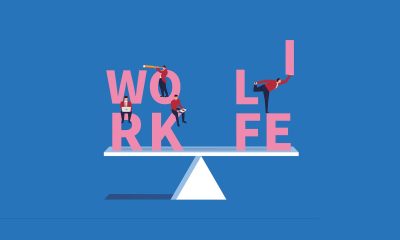Personal Finance
When student loan repayment starts, servicers predict long wait times, advise early action

Student loan borrowers should be prepared to hold, and possibly for a very long time, when repayments resume in a few months.
The Department of Education recently modified its contracts with loan servicers that include cutting the pay they earn servicing each borrower and the minimum number of hours customer service centers must open each week.
These cuts couldn’t come at a worse time as tens of millions of borrowers will likely have to speak to their loan servicer when payments resume soon.
The Supreme Court continues to mull the plan’s constitutionality. A ruling is expected in the next few months.
Servicers are the first people borrowers turn to when they need help with their student loans. Servicers help borrowers enroll in affordable repayment programs and manage the other logistics of paying student loan bills.
“It’s going to be very busy for at least a couple of months with longer hold times,” said Scott Buchanan, executive director at nonprofit trade association Student Loan Servicing Alliance. “It’s just a matter of whether it will be 30 minutes or two hours.”
Debt forgiveness plan: Do I qualify for student loan forgiveness? What to know about Biden’s debt plan.
Apply, just in case: Feds release preliminary application for student loan forgiveness; relief to come later
What changes has the Department of Education made that will hurt service?
Nelnet, a publicly traded company that owns two major student loan servicers, said late last month it would cut 550 jobs after the Department modified its contract with the company, effective April 1. Changes included significantly reducing the price Nelnet earns per borrower each month and transferring a million borrowers to another loan servicer, a move not based on performance, Nelnet said.
Those job cuts follow 560 layoffs earlier this year due to delays in the student debt relief and return to repayment programs. Servicers had hired aggressively ahead of President Joe Biden’s “final” federal student loan repayment pause ending Dec. 31, 2022. When that was extended again to the current 60 days after a Supreme Court ruling or 60 days after June 30, whichever comes first, servicers were suddenly overstaffed, Buchanan said.
Not only are there now fewer people to help borrowers, but the Department also cut the minimum number of hours its customer service center is required to open each week.
Previously, Nelnet was required to have its contact centers open from 8 a.m. to 11 p.m. EST on Mondays, 8 a.m. to 8 p.m. Tuesdays through Friday, and 10 am to 2 p.m. on Saturdays.
Now, the company isn’t required to have its contact centers open on Saturdays. In addition, Nelnet is required to be open for two fewer hours in the evenings on Mondays, Thursdays and Fridays.
Nelnet isn’t the only student loan servicer, but as a public company, it’s required to disclose these business changes. Buchanan said Nelnet isn’t an isolated case. Changes have been made “across all servicers” he said.
Dead or alive?: Is Biden’s student debt forgiveness plan dead? Four questions the Supreme Court could answer
Keeping score: Student loan forgiveness could ding your credit score. Here’s why.
Why is the Department of Education cutting its budget for servicers?
The Department spent much of its budget on implementing the income-driven repayment (IDR) and Public Service Loan Forgiveness waivers, which increased borrowers’ payment counts toward loan forgiveness, Buchanan said. And without additional money from Congress for the Office of Federal Student Aid (FSA), the Department’s now having to make cuts at the expense of the millions of borrowers who are going to need advice when student loan repayments finally resume, he said.
A new plan: Deficits and debt: Understanding the difference in Biden’s 2024 budget proposal
Women in debt: Women account for two-thirds of US student loan debt. Here’s how it affects them.
Why doesn’t Congress allocate more money to FSA?
The White House initially asked in its 2023 budget proposal, to increase FSA’s by a third to $2.65 billion. Republicans reportedly countered with a 20% budget increase on the condition none of it would go towards implementing student debt cancellation if it won the Supreme Court’s blessing.
The White House balked, leaving FSA without any bump in funds in the omnibus bill passed in December.
Debt-free path: Is it possible to avoid student debt? These career, education tracks offer a different path
Many will still pay: Regardless of SCOTUS decision, 25 million people will have to repay student debt. Here’s how to prepare.
Is there anything the Department of Education can do to avoid customer service problems?
It says it’s working on it.
“The Department will keep doing everything in its power to better serve students and borrowers,” a Department spokesperson said. “Restarting repayment requires significant resources to avoid unnecessary harm to borrowers, and we will continue working with Congress to fully fund President Biden’s FY24 budget request. While these requests were not fully funded last year, they are much-needed resources for Federal Student Aid to invest in necessary improvements to student loan servicing,” among other things.
Taxing debt relief: Fact check: Student loan forgiveness won’t be taxed by federal government, though states may
Help cutting costs: California helps college students cut their debt by paying them to help their communities
Is another student loan payment pause coming?
It’s possible there’ll be another pause, said Ted Rossman, senior industry analyst at Bankrate.com.
“A lot of people haven’t paid in so long, they may have a lot of questions,” he said. “Servicers may have changed; they have to reset auto payment or may have changed credit cards or banks. There are a lot of logistics, and it could be a whole relearning process. I wouldn’t be surprised if it’s pushed back again. How many times have we had the “last” pause? These are all reasons it might get pushed back again.”
Regardless, another delay won’t prevent the inevitable, Buchanan said.
“More time doesn’t solve the problem,” he said. “Borrowers don’t have to pay for a couple of more months, but it doesn’t move the needle much for resumption,” noting people have so far shown little interest in preparing. Plus, there are 7 million people who graduated during the freeze who have never made a payment and will need help.
No plan B: Plan B to cancel student loan debt? The White House won’t go there even as pressure mounts
Emergency help: About 18 million college students got a financial boost from Biden’s COVID-19 rescue law
What can borrowers do to avoid long wait times?
Contact your loan servicer now before repayments resume.
Though the Department has instructed servicers not to communicate with borrowers yet about their loans, borrowers can contact their servicers before the expected onslaught of calls to confirm their personal information, loan amounts and payment plans.
“We can even set them up if their income changed during pandemic, need an IDR change,” Buchanan said. “We can talk them through the options and get the paperwork done now. Plan for this now. Don’t wait until the last minute because it will probably be even more challenging.”
Medora Lee is a money, markets, and personal finance reporter at USA TODAY. You can reach her at mjlee@usatoday.com and subscribe to our free Daily Money newsletter for personal finance tips and business news every Monday through Friday morning.
This article originally appeared on USA TODAY: When student loan payments resume, wait times may be long so act now
Read the full article here

-

 Passive Income6 days ago
Passive Income6 days agoThe One Microsoft Design Tool Business Owners Shouldn’t Miss
-

 Side Hustles4 days ago
Side Hustles4 days agoThe DOJ Reportedly Wants Google to Sell Its Chrome Browser
-

 Side Hustles4 days ago
Side Hustles4 days agoHow to Create a Unique Value Proposition (With Tips & Examples)
-

 Investing3 days ago
Investing3 days agoAre You Missing These Hidden Warning Signs When Hiring?
-

 Investing5 days ago
Investing5 days agoThis Founder Turned a Hangover Cure into Millions
-

 Investing6 days ago
Investing6 days agoYour Firsthand Experiences Shape the Way You Run Your Business — Here’s How Mine Shaped Me
-

 Make Money4 days ago
Make Money4 days ago7 Common Things You Should Never Buy New
-

 Investing4 days ago
Investing4 days agoGoogle faces call from DuckDuckGo for new EU probes into tech rule compliance By Reuters


















